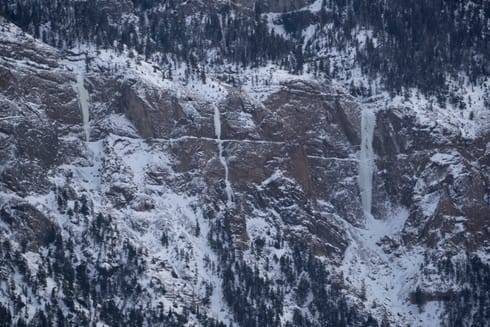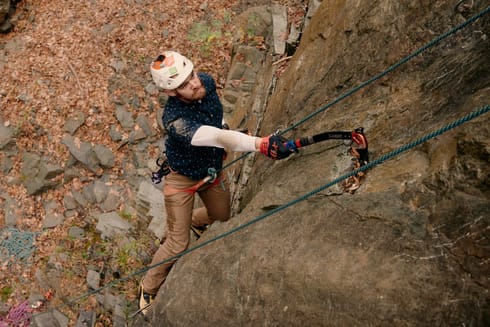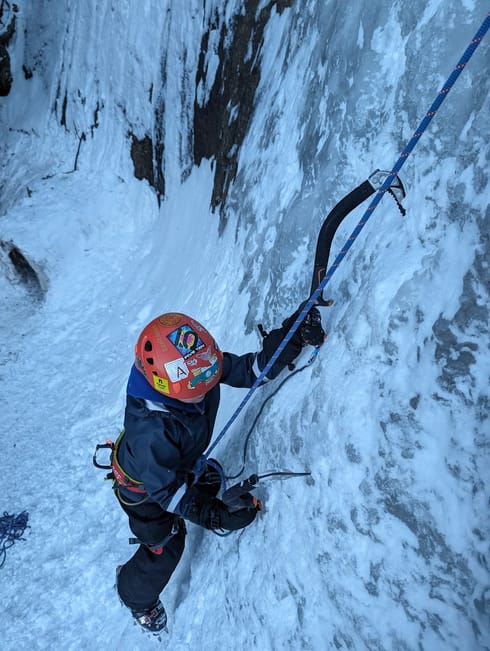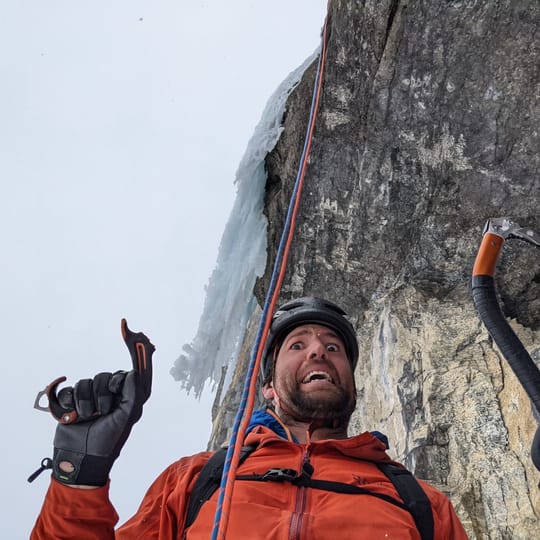
You Shouldn’t Be Falling on Your Tethers (Or Should You?)
Although it’s a leashless world, ice tool tethers still have a place. Learn how some of the best are adapting these basic tools to some off-label uses.
By Greg Barrett
I’m in the Canadian Rockies with Raph Slawinski, four pitches up a new M9 we’re sniffing out near The Real Big Drip. Route development in this terrain is rarely done onsight, and requires a hybrid approach of free and aid climbing tactics — you inch your way up the wall by whatever methods make progress and keep you alive. At this particular moment, my last few aid placements have been my ice tools hammered into a chossy crack. The tool I’m sitting on now doesn’t inspire much confidence, but I need it to hold my body weight while I clean some loose rock. My previous tool sits wedged in the crack below me, attached by an elastic tether. I lean back just a little too much – SHIT – and the crumby rock I’m aiding on gives way.
Suddenly I’m in the air. Time passes progressively more slowly as my fall continues. I feel something come tight, but only briefly, before a loud snap reaches my ears, and I keep falling. In the adrenaline-fueled slow-mo, I have time to form a full thought: Did my gear pull? But no, as my ice tool pirouettes off the wall past me and plummets, unattached, into empty space, it becomes clear that it’s my connection to the tool that has failed once again. I have time to contemplate my disappointment before my .5 C4 slides further down the crack and catches my fall, becoming permanently fixed. Whew. This wasn’t even supposed to be the hard pitch.
In any case, now short a critical piece of gear, it’s time to descend. After a few rappels and 15 minutes of stomping around in the snow, I find the tool, a Black Diamond Hydra. It’s held up beautifully, but my tether is snapped in half.
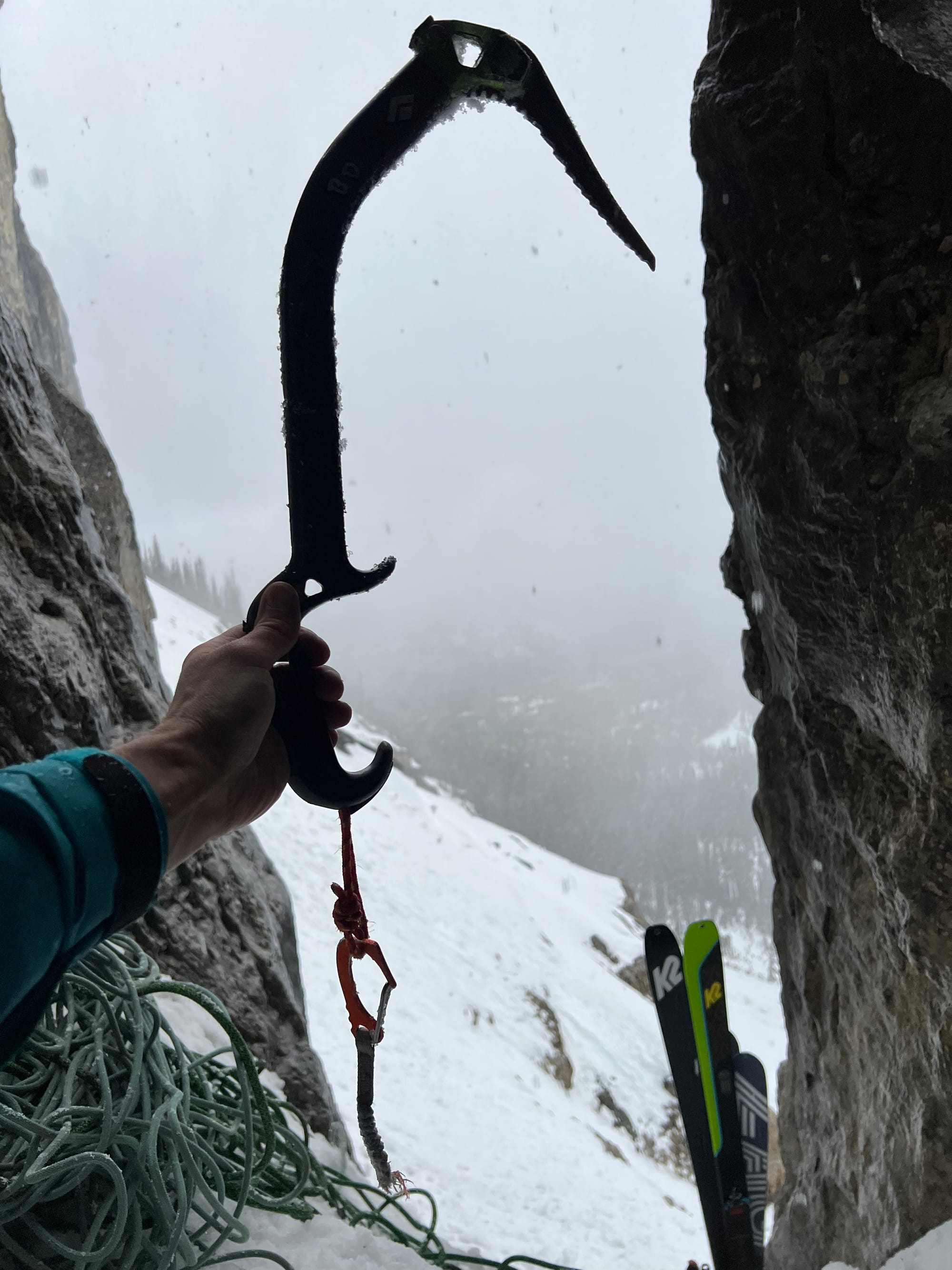
“Note: You shouldn’t be falling into your tethers!!!!!!!!!” Kolin Powick, former VP of Product at Black Diamond, texts me that evening. Kolin has been involved in developing climbing gear for decades — including the tethers and tools I had been using. In general, he’s right: tethers are not designed as fall protection. I get that.
But I don’t want to drop my tools when I’m four pitches up! And there are times in modern mixed climbing when it’s totally reasonable to fall.
A Couple Examples
This wasn’t my first mixed fall of the season. A few weeks prior, I was three pitches up a new six-pitch M9/M10 line on the Stanley Headwall with my frequent climbing partner Nick Baggaley. I’d sent this pitch before, and it was time to take the route to the top in one clean push. I made it through an intensely scratchy crux and traversed my way into a chossy crack where the pitch eased. Complacency got me and my upper tool sheared out of a gravelly placement. My lower Petzl Nomic was less eager to leave the wall behind and decided it didn’t want to join me in flight until after the pommel snapped in half. I was cleanly caught by the rope, but the tool ricocheted down the whole wall. The FA would have to wait.
Even earlier that season, Slawinski and I were in the process of establishing Rasputin Roof, an M9 near Superbok. Slawinski had been scratching his way across the thin horizontal roof for a while, trying to work out the beta on the second pitch. Eventually, a tool skated out, and he was falling amidst a forest of hanging icicles. One tool stayed behind and his tether snapped, followed by the tool plopping unceremoniously into the snow beneath the route.
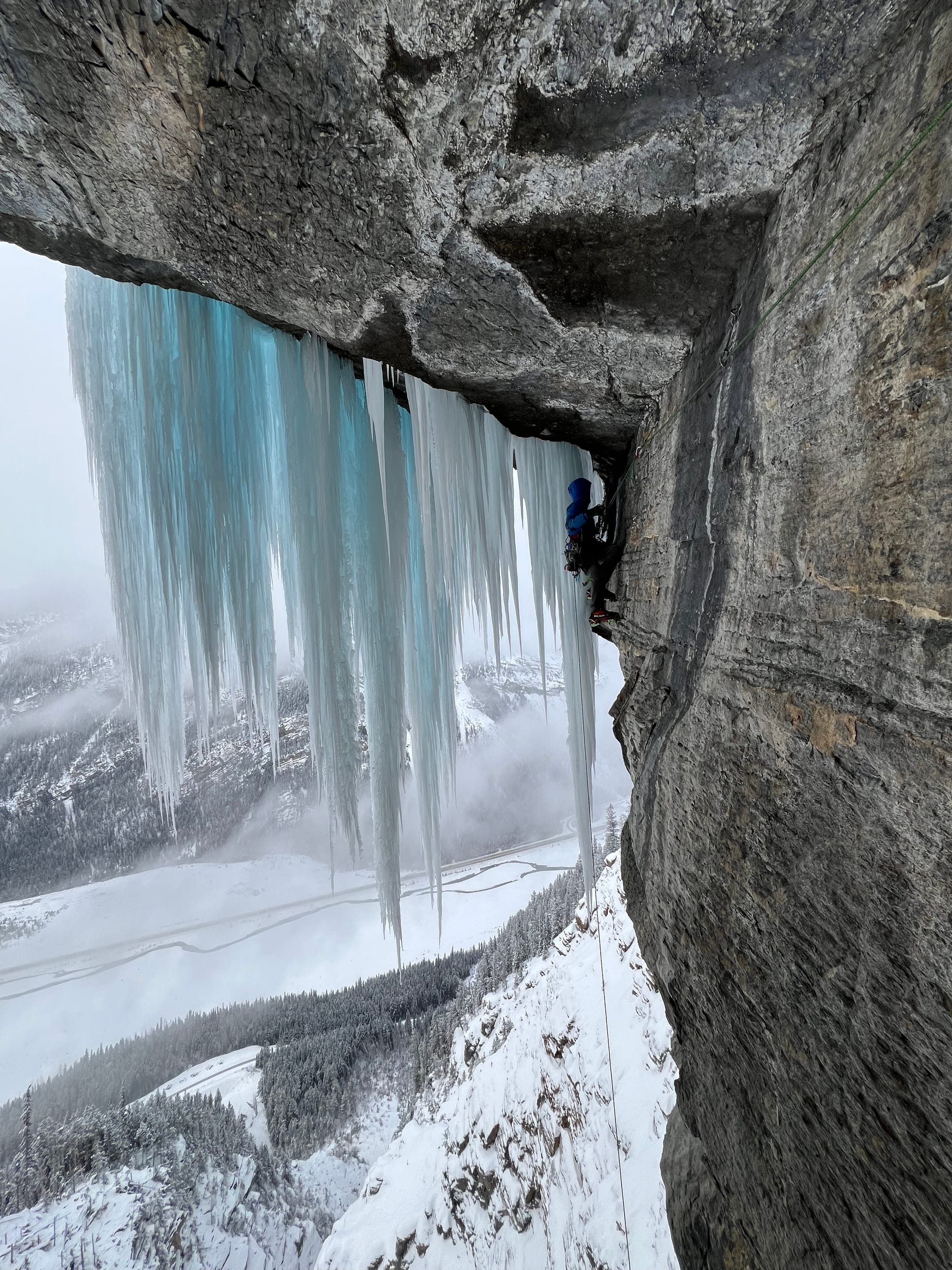
Sometimes things have gone even worse. The season prior, Nick was scratching his way across the thin and friable mixed pitch of Suffer Machine. He’d made it most of the way through the rock portion and left a Petzl Ergonomic in a solid crack while clipping from a higher tenuous edge. The change in balance popped his upper tool, and I heard a crack as he fell down the slab. After he came to a stop, he pulled his tether up to get his tool back and was greeted with only the handle (pictured at top). The tool had snapped clean in half, and the upper piece had fallen down onto the approach slope. Decidedly a day-ender.
I’m lucky these falls haven’t gone worse. I’ve known multiple climbers who have never found a dropped (or launched) tool after it’s fallen a few pitches down into powder. Worse yet, there is a very real possibility that falling onto tethers causes a spring-loading effect, sending a six-inch dagger into your face or body. I’d much rather break something than be impaled.
Ablative Ice Tool Tethers
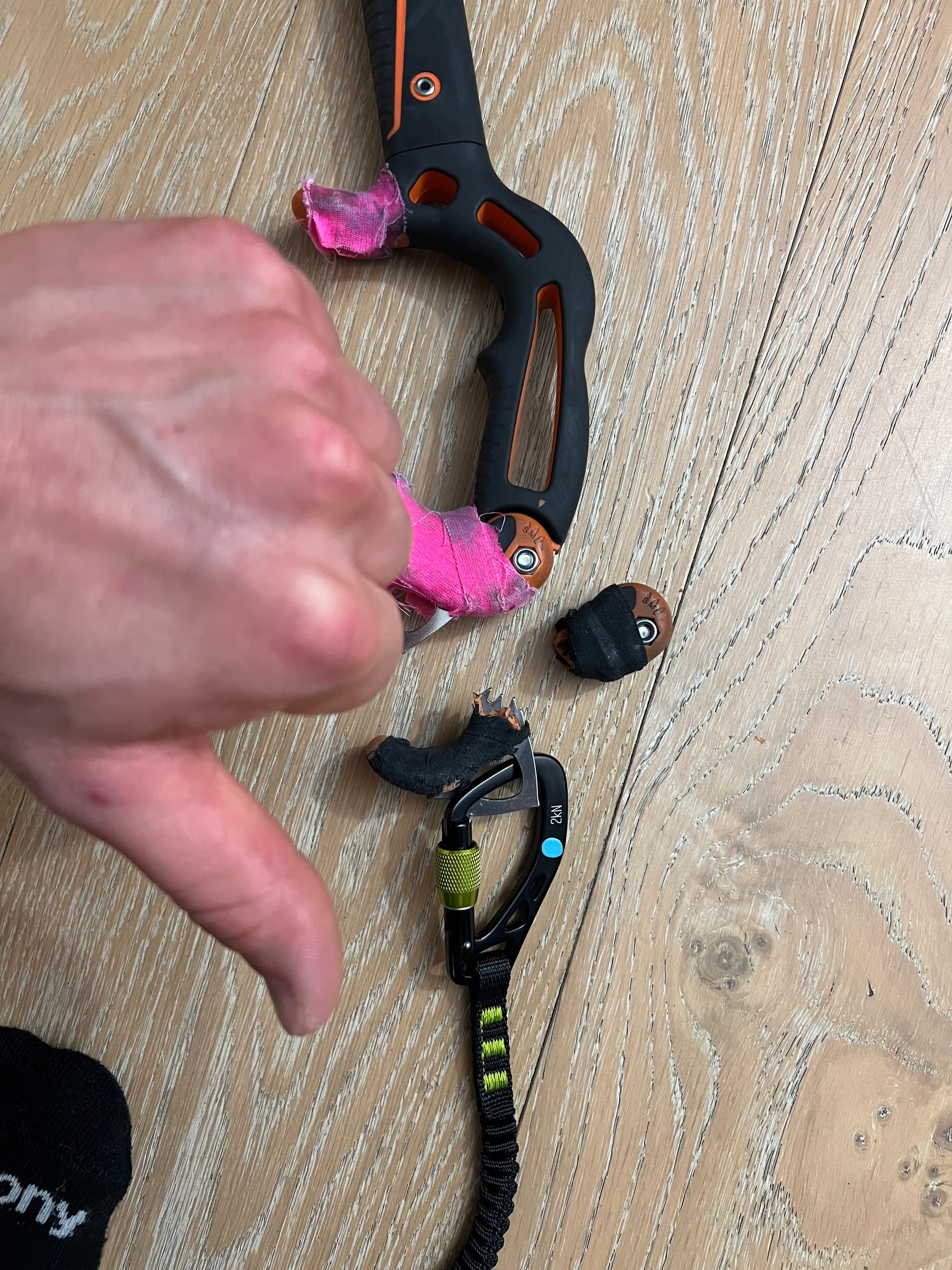
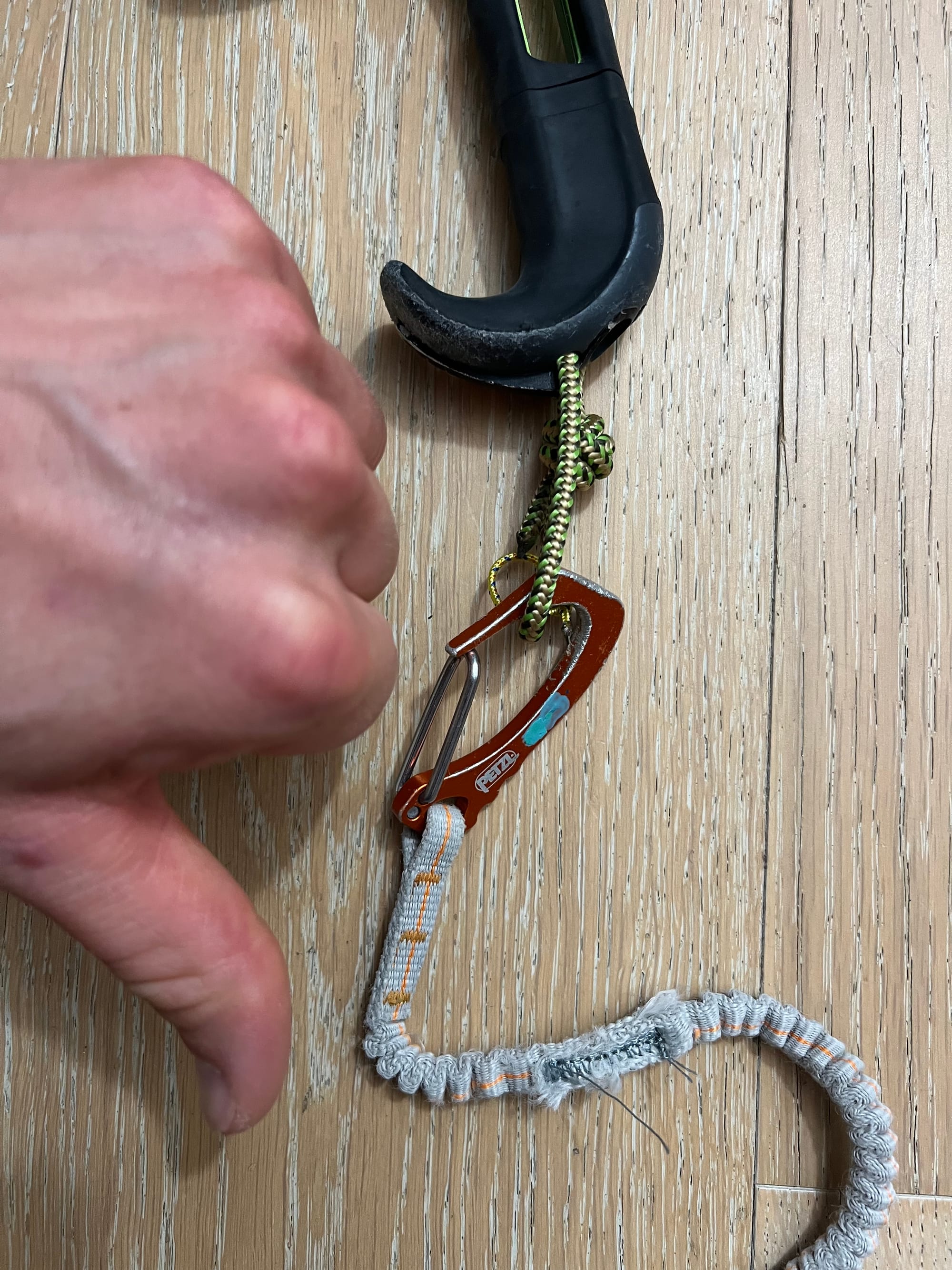
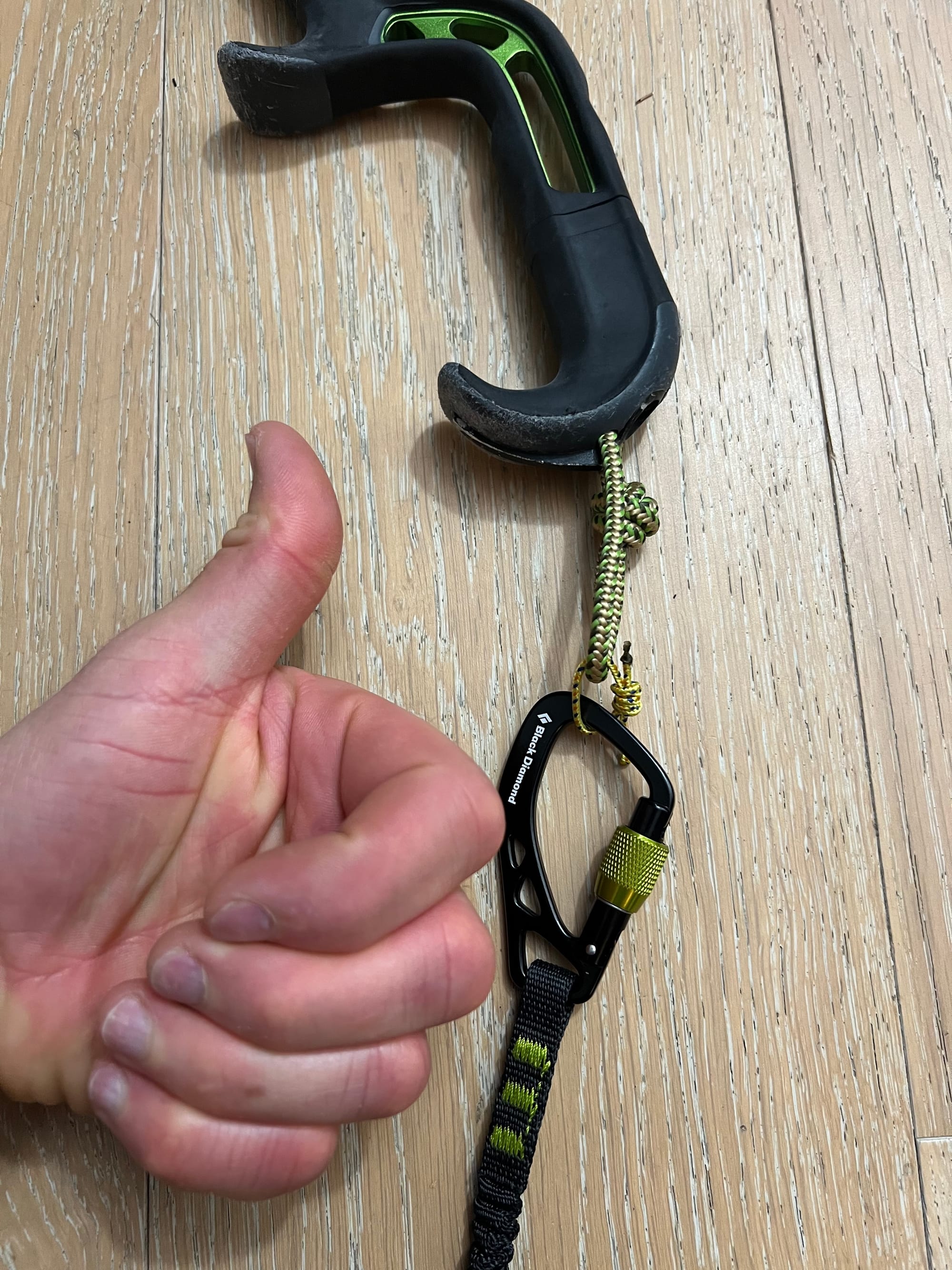
(Pictures L to R: Left to Right: Petzl Nomic with snapped finger rest; BD Hydra with normal cord loop (and repaired tether); Hydra with 2mm ablative tether.)
As Kolin told me: you shouldn’t be falling into your tethers. Understood; but these were all clean falls in places where it was safe to do so. And I'd really like to be able to take a fall on a multipitch without ending my day. So, I present a new tactic for your consideration: ablative tethers.
As we just read, there are times when you don’t want to lose your tool if you drop it, but you also don’t want to break $50+ components and launch your tool down the wall if you whip on it. To solve this, I’ve added loops of 2mm cord to each of my pommels, and in those situations, I now clip that instead of a stronger point. The 1 kN cord with a double fisherman’s knot holds about 60kg of static load, which is below my body weight. It will certainly be the first thing to fail, and perhaps it will do so before spring loading and launching my tools.
My first involuntary test of this system took place recently on another M9 on the Stanley Headwall, and the cord did indeed break first. Unfortunately, my tool was on a tiny edge, so it still fell all the way down the route. At least all I need to replace is some cord!
To Tether or Not to Tether
I don’t say all this to denigrate tethers. There are times on big routes when losing a tool is a safety hazard, and a strong attachment might be warranted. There are even people who report having been caught by tethers in situations where a fall would have been catastrophic. And there are plenty of times when a tether can keep a simple fumble from turning into a rappel and an endless search in a snow slope. With all that said, here’s my personal take on tethers in different situations.
Climbing tetherless?
Do you like the freedom of climbing tetherless? Are you on terrain where dropping a tool is an inconvenience but not a safety hazard? Enjoy the freedom of movement without untangling twisted messes! I rarely use tethers on pure ice routes or when cragging.
Seconding?
If you clip your tethers into the rope instead of your harness, you can fall without loading your tools. You might end up partway down the pitch with your tools far above, but that’s a salvageable situation.
Going for it in safe-to-fall terrain?
I’m excited about this 2mm cord loop idea and curious if anyone else has luck with it! I’m also trying to make a point of racking a tool on my shoulder if I’m doing any matching on tenuous placements. It’s saved me $50 so far, so I’m calling it a win.
Climbing with tethers in no-fall terrain, and not counting on them to catch a fall?
Great! You won’t drop a tool, and if you’re in terrain where you shouldn’t be falling, then don’t! If you’re unsure whether you’ll whip, think about backing off.
But why don’t companies make tethers designed to catch falls?
They do, they’re called Via Ferratta lanyards, and they aren’t meant for ice climbing.
But I think this is the path to go down if you really want your tools to catch you. Dynamic rope, screamers, anything to limit load. I’ve seen pictures of improvised systems like this, and heard from experienced climbers who are pretty adamant they want tethers to catch them. I still personally come back to: “If you’re in no-fall terrain, don’t fall.” If you fall on strong tethers, you risk tools flying at you at high speed, parts of your tool or tether breaking, or technically even your belay loop failing. If you really want extra security while placing gear, consider clipping the rope to your tool with a draw while you do so. Then, just bump the draw up to your placement when you’re done.
What are your thoughts? I’d love to hear other climber’s approaches to tethers in different situations. Like so many things in climbing, there seem to be intensely polarized opinions, and I will certainly say my own have evolved over time.
About the Author
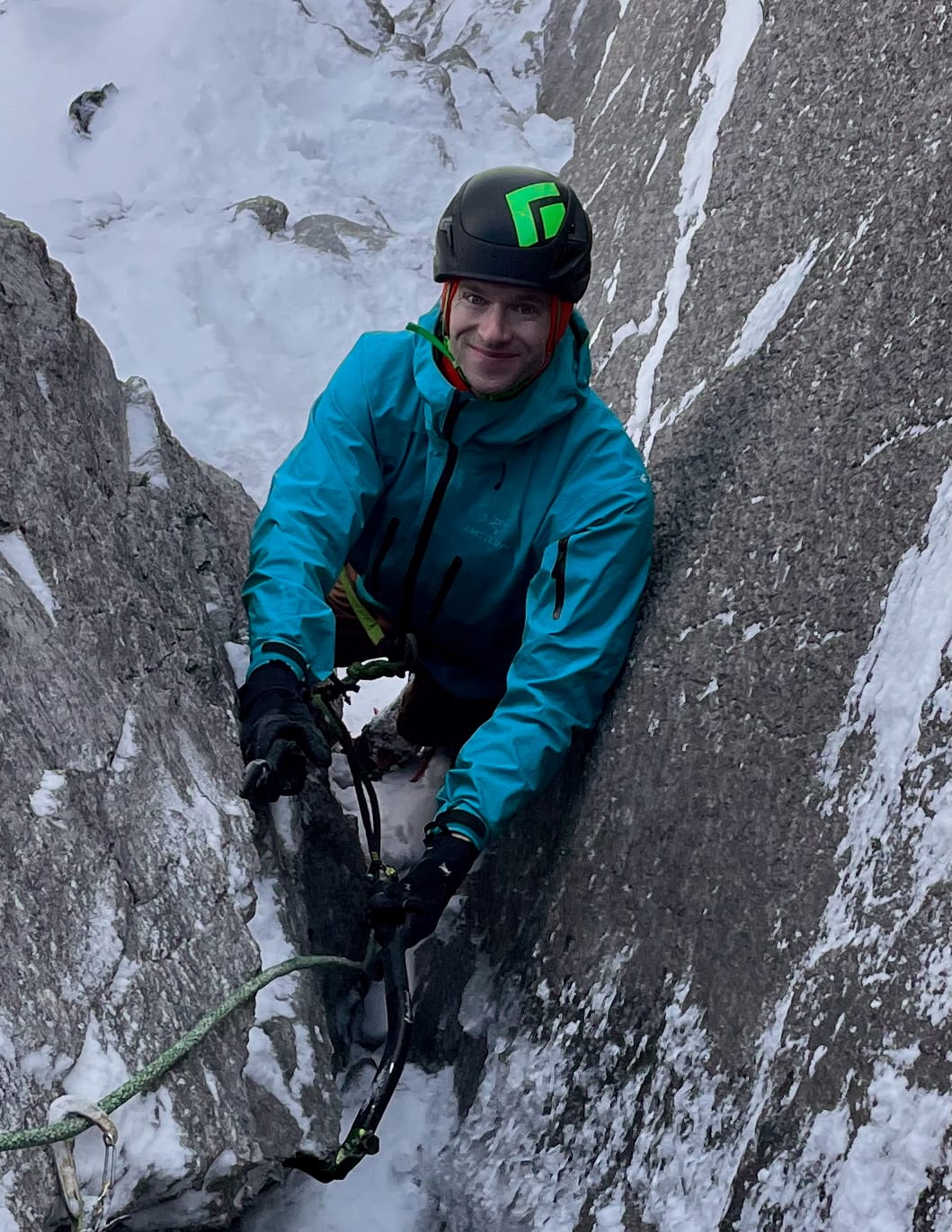
Greg Barrett is a mixed climber and aspiring alpine guide in Canmore in the Canadian Rockies. He strongly believes northern winters still aren’t long enough. While he thinks of himself as an alpine climber, he can more often be found upside down in caves.
Want to talk tethers? Leave a comment here, or you can find Greg on Instagram (@Frzngreg). His website is https://frozengreg.com/

